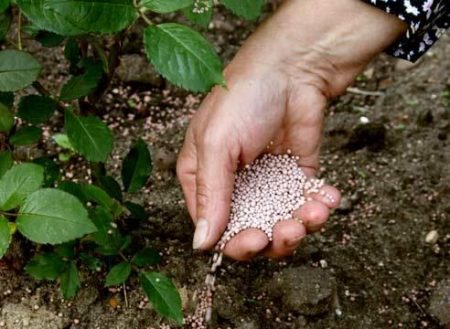How to plant and care for a curb rose?
Content
How to plant?
Blooming from May to October or twice a season - in June and August - is the main reason why border roses are always at the peak of popularity. Designers never forget about them, they can be found not only in parks and squares, but simply on city streets and squares. There are many varieties that differ in petal shape, flower color and flowering time. Almost all of them can live in a city apartment, not just outdoors.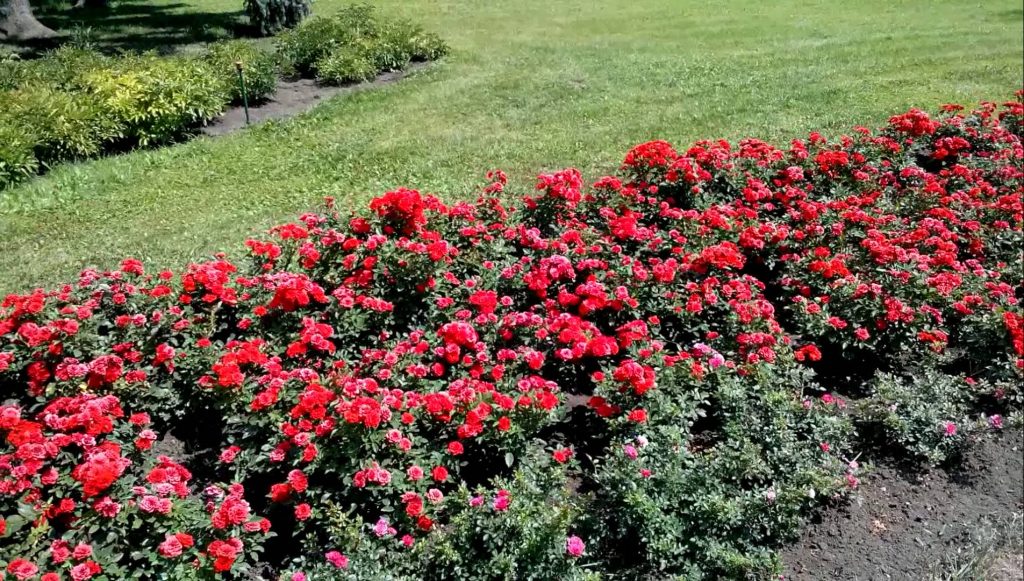
It is best to plant them in the spring, as soon as the ground thaws and warms up, miniature roses easily tolerate small frosts, but for this they need to take root and get stronger, and it is desirable to plant them in a warm ground. The place needs to be chosen bright and protected from the wind. If the sun cannot shine on roses all day, then let it be better to warm them in the morning.
The ideal option would be a place where roses basked in the sun in the morning and in the evening, and in the daytime, in the hottest time, a shade appeared, because they prefer temperatures within +20 degrees. The distance between the bushes is left at least 30 cm, sometimes up to 50 cm, if the bushes grow luxuriantly.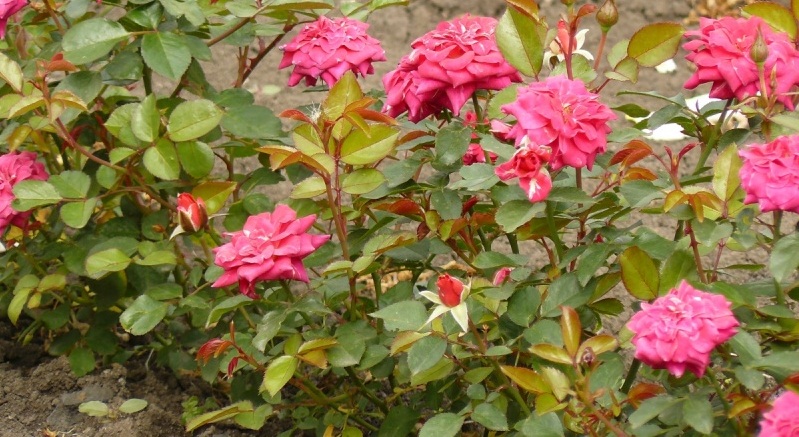
Small roses are not picky about the soil, but they grow best and bloom profusely in light, nutritious soil, so you need to provide them with as fertile loam as possible. Their roots grow up to 30-odd centimeters; peat and compost or humus in the future flowerbed must be added to this depth. The hole is dug wider - with a depth and diameter of at least 40 cm, if the ground is not suitable, then more to create a comfortable soil. Before that, you need to free the entire area from weeds and their roots, especially carefully remove the sow thistle and dandelions so that later they do not interfere with the roses growing.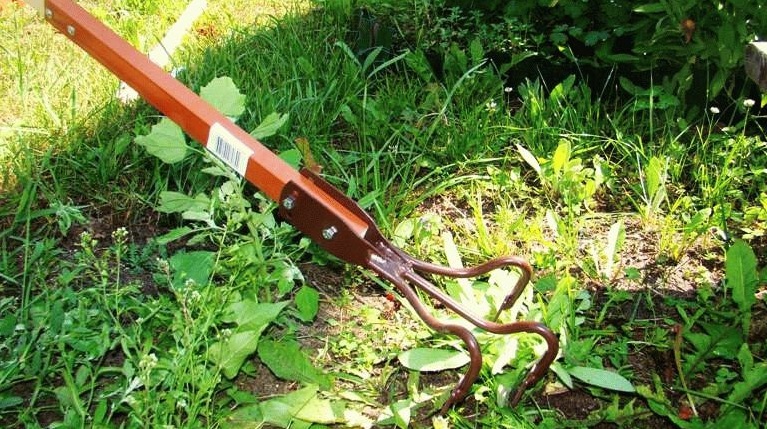
Before planting, it is advisable to keep the seedlings with roots in water or at least wrapped in a wet cloth. Before planting, they are examined, slightly shortened, removing dried or damaged parts (there should not be such), the shoots are also slightly pruned 0.5 - 0.7 cm above the healthy kidney. The soil mixed with fertilizers is poured into the hole, and a seedling is placed on top so that all the roots are spread. Then they carefully fall asleep, deepening the root collar by 3 - 4 cm under the ground, tamp the soil, watered well with water.
It is better to close young plants from spring frosts or nighttime cold snaps, so when they take root and get stronger, small frosts will not harm them, and in the first spring it is better to take care of them.
Video "How to take care of a rose"
From the video below you will learn how to properly care for a curb rose.
Care
Planting and caring for these amazingly beautiful flowers does not cause a lot of trouble, you just need to be an attentive owner, then border roses will delight you with long flowering. They love warmth, but not heat, they easily endure a cold snap, and if the air warms up more than +25 degrees, the bush will be too hot, the roots may overheat, so in extreme heat it is better to mulch the ground around the bushes and shade the aboveground part.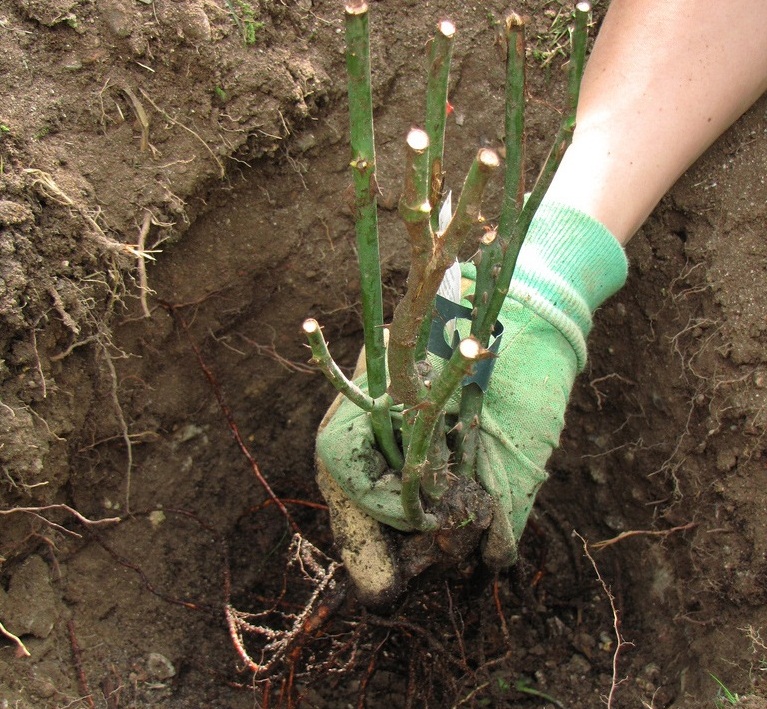
Watering
Roses are watered often, but not too abundantly, this should be done regularly, preferably in the evening, using the settled water at room temperature heated by the sun. It is very important that the water does not stagnate, otherwise root rot may appear. It is advisable to water the ground under the bush, and not the bush itself, these roses do not like water falling on the greens.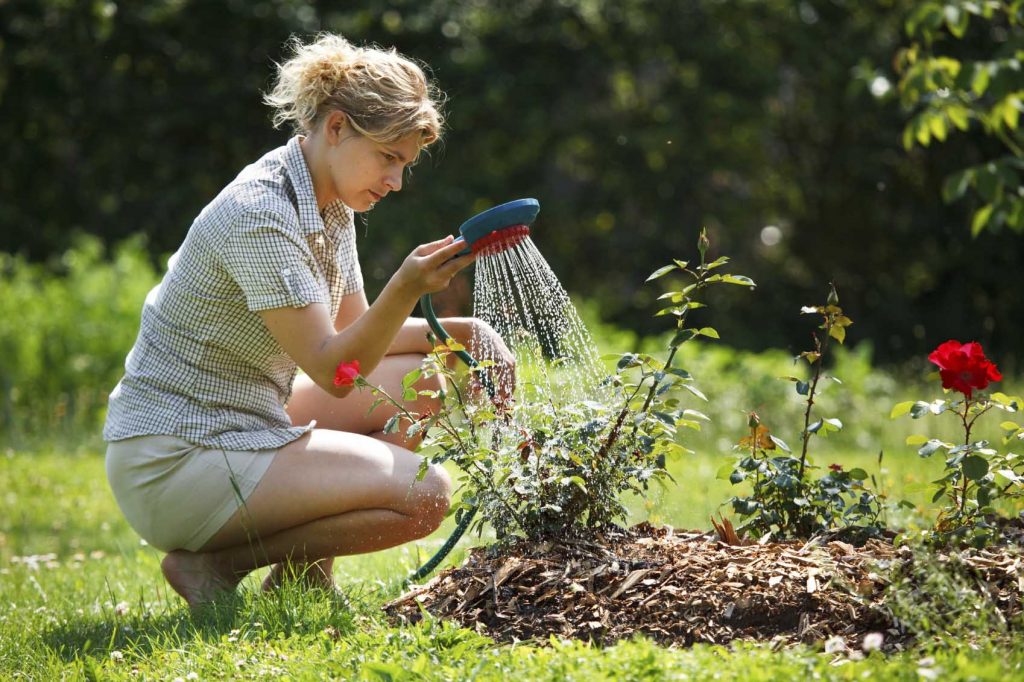
Top dressing
Lush color almost all summer requires a lot of energy, so the rosette needs additional feeding. They are carried out several times, but only until mid-summer, otherwise the plant will not prepare for winter, this is especially important where winter is harsh and comes early. Humus or manure is mixed with the top layer of the earth, evenly laid out under the bushes in the spring. In no case should fresh manure be used, it can burn the roots of even an adult plant.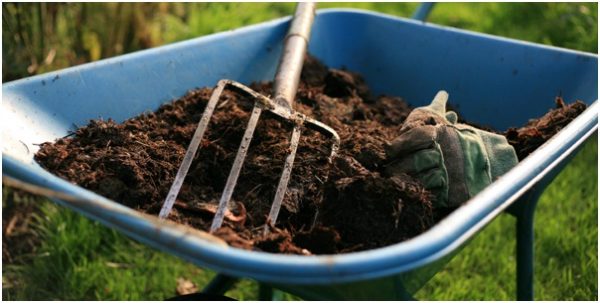
When the first buds begin to form, you can pour the bushes with calcium nitrate, 1 tablespoon of which is dissolved in a bucket of water. Watering with such a fertilizer can only be done after good watering with water, after which you can water again at least a little.
Roses respond well to watering with herbal mash or mullein infusion solution. Such feeding can be done after 2 - 3 weeks. In the first year of life, roses are fed only in the spring, and in the fall, compost or peat is used for insulation, for the first year this is enough for them. The hotter the summer, the less dressing you need to make, but in a cool rainy summer, you can water it alternately with a solution of organic and mineral fertilizers every 2 weeks.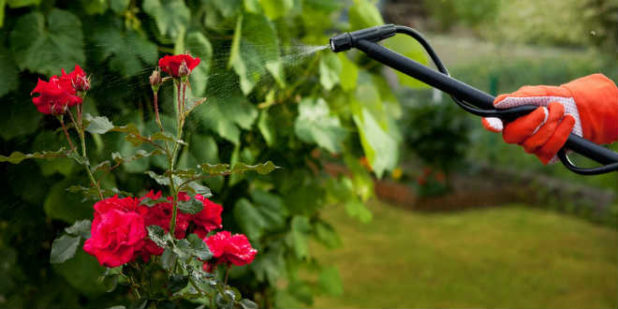
Because very hot or very rainy weather makes roses endure stress, they can be very vulnerable. You can help them survive unpleasant weather by using special preparations: "Zircon", "Epin", "Ecosil". You can fertilize miniature roses with products for flowering plants that are sold in stores - this is much easier to do than to prepare solutions and infusions yourself.
Pruning
Sanitary and formative pruning is carried out all summer, if you do it carefully, using a clean sharp pruner, then the roses will transfer it well, the main thing is to cut, and not flatten the stalk. In the first year, all the shoots are pinched above the 5th - 6th leaf, this will make the bush lush, it is also advisable to cut off the buds. In adult bushes, they continue to pinch or simply shorten the lateral shoots, while the central ones usually grow straight up.
You need to cut off damaged shoots, wilted flowers, this stimulates the formation of new branches and flowers. It is imperative to remove wild shoots, which are often formed on grafted plants, they differ in the number of leaf parts - for a varietal rose, a leaf consists of five parts, and for a rose hip - of seven. Such wild shoots cannot be shortened, because they will grow and multiply, they must be cut out mercilessly at the level of the root collar, for this you will have to slightly break the ground near the root.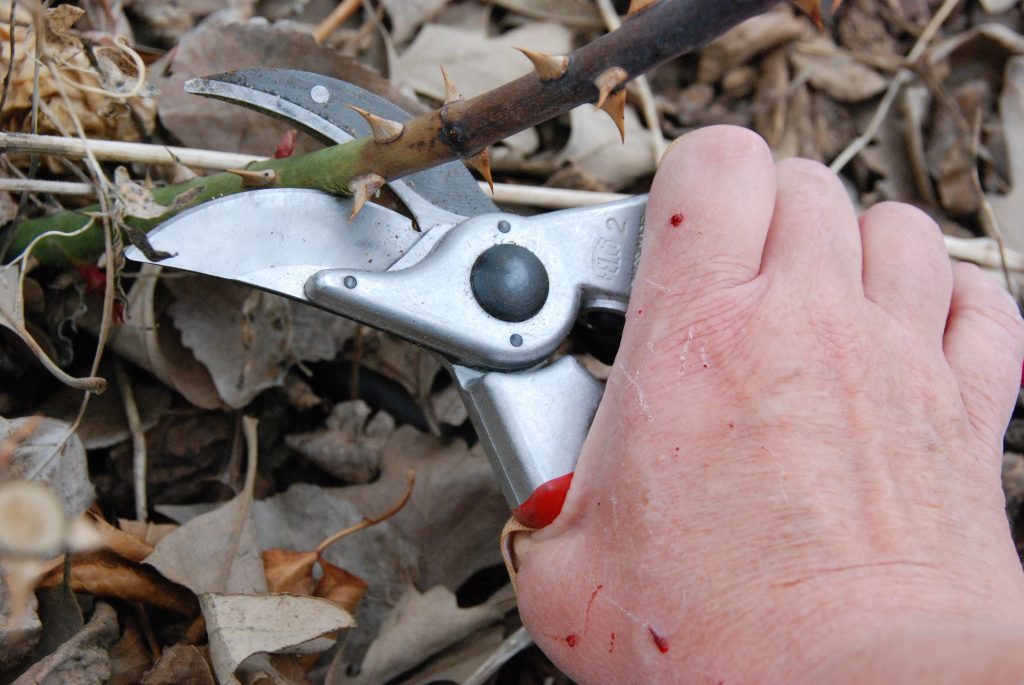
In the fall, long shoots are usually shortened, the buds that did not have time to bloom are cut off, then the plant is prepared for wintering. As soon as the first night frosts appear, the fallen leaves are removed, the shoots are cut for the last time, the bushes are heaped, raking at least 20 cm of earth.
Some growers lay the shoots on the laid spruce branches or peat, and cover them on top with fallen leaves, spruce branches. Others prepare the frame, cover the plants with roofing material, waterproof paper, and film. And still others huddle and wait for snow, which will cover low plants.Any method is good - it all depends on the severity of the winter, on the amount of snow that will fall from the very beginning.
The main thing is that the roses do not freeze.
Diseases and pests
Miniature roses, like all their other varieties, can get sick with fungal diseases or get an infectious burn. Proper care, regular watering, the optimal amount of fertilizer should protect them from such troubles, but changeable weather, insects, wind and rain deliver pathogens, in which case they will have to be dealt with.
Bordeaux liquid or 1% sulfur solution can help get rid of powdery mildew. The same sulfur and copper oxychloride will help heal rust. Copper oxychloride and Bordeaux liquid are used for black spot. Fundazol will save you from an infectious burn. Any specialty store will offer many drugs that can cope with a stand or another disease, but it is imperative to cut and destroy the affected parts of the bush, disinfect the ground around, and maybe change its top layer, since spores can linger there in order to attack roses with renewed vigor in spring ...
Pests can weaken plants and bring on pathogens. They need to be destroyed or scared away. Spider mites, aphids, sawflies, leafhoppers - there are enough people who want to settle on the leaves, shoots, buds of roses, feeding on their juice or leaf pulp. Ladybugs and lacewings do not harm roses, but they eat many pests, so it would be good to settle them nearby. Some plants scare off parasites with their smell - these are marigolds, onions, sage.
A spider mite can infect roses in dry hot weather, it and aphids can be washed off with water: spray the bushes with a soap-copper solution or a solution of soap with wormwood. Wood ash, infusions of calendula, garlic and yarrow can be a good prevention, but if the parasites are already wound up and do not want to leave the flower bed, then you will have to use fungicides. "Aktara", "Aktofit", "Mospilan", "BI-58" - these and others can be bought in the store, carefully study the instructions before use.
How do they reproduce
If you want to plant roses in your area, it is best to buy seedlings from a nursery with a good reputation. But if you or your friends already have a rose that you want to breed, then this can be done in several ways.
Propagation by cuttings
In the first half of summer, semi-lignified shoots should be cut, divided into short (10 - 12 cm) parts with 2 - 3 buds, planted in a moist, light, breathable soil, having previously shortened the leaves by half, cover with a glass jar and water for a couple of months, sometimes raising the jar to airing. Such a greenhouse will help them take root. Some flower growers suggest dipping one cut for a while in a preparation that stimulates root growth, or watering already planted cuttings with a similar preparation. In the fall, they should be dug into the sand and transferred to the cellar, and in the spring they should be planted in a permanent place. Cuttings usually release roots well, but they can freeze out in winter, so it is still better to plant them in spring.
Propagation by seedlings
If you have an adult bush, then it can be easily divided into several seedlings and planted separately. The bush must be dug out, carefully divided so that each part has a root and a shoot, they may well turn into separate healthy bushes. This is also best done in the spring, even before bud break.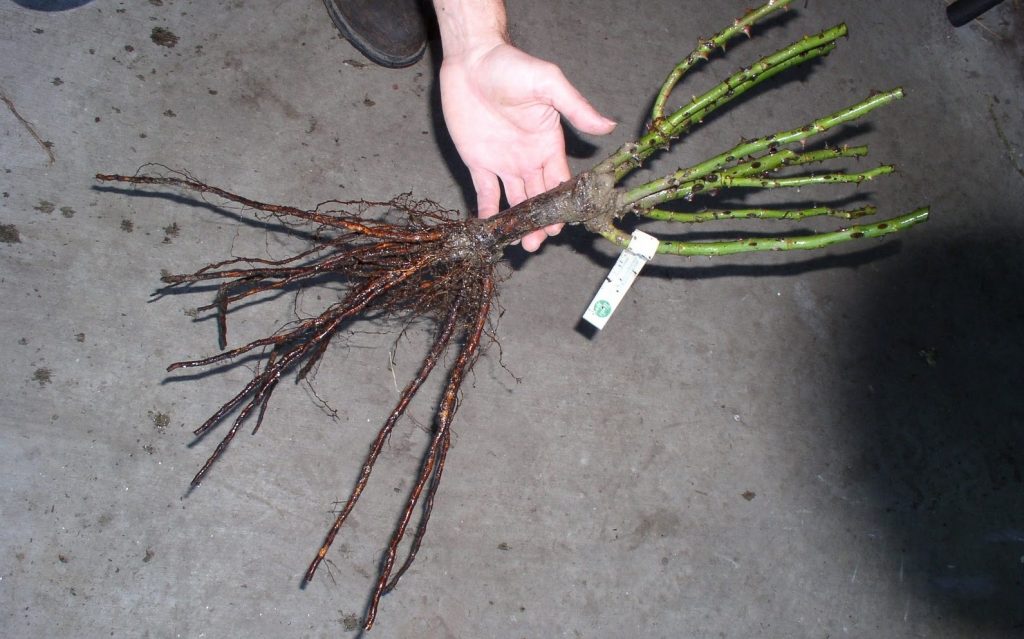
You can dig in a flexible shoot from spring, pin it for immobility, water it, protect it - by the fall you can get a rooted layer. And it is worth cutting it off from the mother plant next spring.
Seed propagation
In stores you can find seeds of different varieties of roses, but they are most often dealt with for the sake of breeding new varieties, that is, scientists rather than flower growers. This is due to the long time frame and hassle that not every amateur will go to.
The seeds are soaked, germinated for at least 15 days at a temperature of +20 degrees. The prepared seeds are placed in boxes with fertile light soil to a depth of 0.5 cm. This is done in the fall, the crops are kept at a temperature of +3 to +5 degrees throughout the winter. And only by the beginning of summer you can wait for the shoots. It is clear that neither this nor the next year will give roses flowers. But this method fully justifies itself when a collector finds seeds from a rare rose, for the sake of its flowers it is worth trying.
Video "Autumn planting of a rose"
This video shows how to properly plant a rose in the fall.

